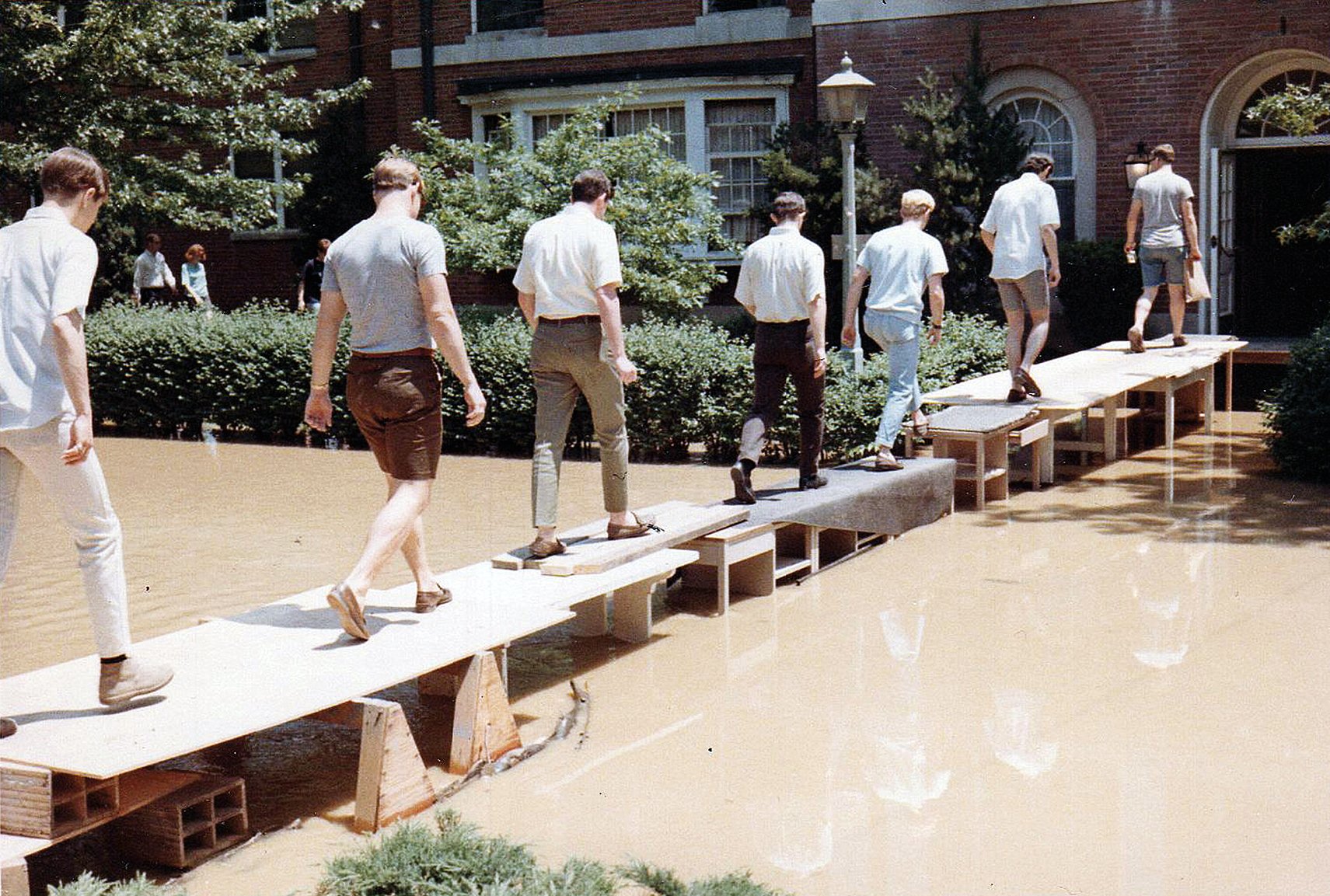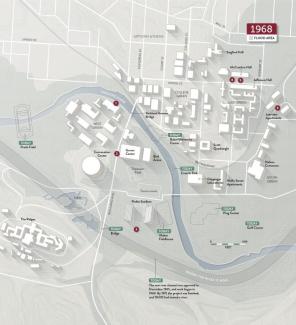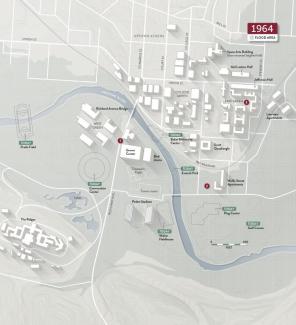
The passage of the GI Bill in 1944 led to an increase in enrollment at universities and colleges nationwide, and Ohio University was no different. The West Green dorms and academic halls were built to accommodate the surge in enrollment. Even though these living and learning spaces were elevated by garages at the base of each building, circumventing damage from a flooding Hocking River didn’t always work. Before 1970, floodwaters on campus—especially on West Green—was an annual event, as predictable as Homecoming and, later, Springfest.

The U.S. Army Corps of Engineers surveyed the area’s flood plain as early as the 1940s, seeking solutions to the annual floods. Throughout the 1960s, flood damage cost the University and the City of Athens more than $100,000 annually. Yet alumni’s stories about how they managed it shows they made the best of it, finding ways to survive—and even thrive—during flood events. This bittersweet tradition came to an end when funding was secured and the U.S. Army Corps of Engineers began moving the river in 1969.
A project decades in the making—keeping the floodwaters at bay by moving the Hocking River—forever changed OHIO and Athens.
Click on the images below to see stunning infographics illustrating the Athens Campus floods of 1964 and 1968 and to view historical photos and excerpted anecdotes from alumni who lived through them. Infographics by John Grimwade .






